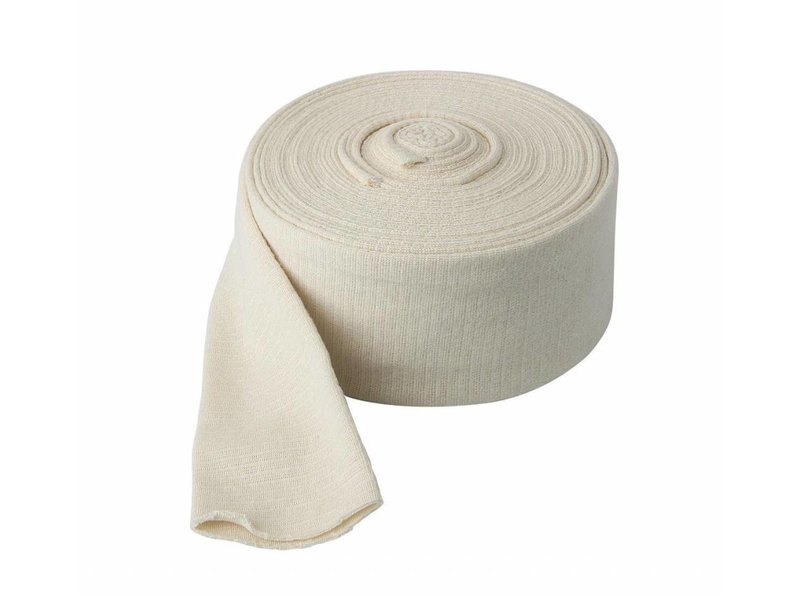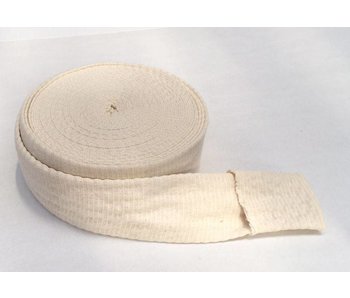Elasticated tubular bandage 10 meter
Supportive, comfortable, radial bandage
Ideal for soft tissue injuries, dislocations and sprains
Natural colour for general use
Range of sizes for all parts of the body
Ten metres in dispenser box
Size: the size is the width of the dressing. For example, size A is 4.5 cm wide and has a circumference of 9 cm.
A 4,5 cm (circumference 10 - 12 cm)
B 6,25 cm (circumference 12,5 - 14,5 cm)
C 6,75 cm (circumference 15 - 24 cm)
D 7,5 cm (circumference 25 - 35 cm)
E 8,75 cm (circumference 36 - 44 cm)
F 10 cm (circumference 45 - 50 cm)
G 12 cm (circumference 51 - 60 cm)
How to apply for muscle strains, sprains and joints:
1. measure around the widest part of the limb to be treated, to determine the correct size bandage.
2. Cut the bandage to twice the length equired for the limb. Allow an extra 2-3 cm for overlap.
3. Apply the bandage like a stocking (with the use of correct sized applicator if necessary).
4. Double the bandage back over the limb/ Ensure the upper edge is taken 2-3 cm higher up the limb than the first.
For application to the wrist with thumb piece:
1. As mentioned above.
2. Cut the bandage to twice the length required for the arm.
3. Fold the bandage into half and make 1 cm long cuts into each half of the bandage on one side in approximately 2 cm to 5 cm from the fold.
4. Pull the first half of the bandage up the arm and place the thumb through the first hole.
5. Double the bandage back over the arm and ensure the thumb is placed through the second hole.
Size: the size is the width of the dressing. For example, size A is 4.5 cm wide and has a circumference of 9 cm.
| Size A | 4,5 cm x 10 meter | Very Small Limbs, arms or Feet |
| Size B | 6,25 cm x 10 meter | Small limbs/arms |
| Size C | 6,75 cm x 10 meter | Hands, Feet or small ankles |
| Size D | 7,5 cm x 10 meter | large hands, medium feet or small lower legs |
| Size E | 8,75 cm x 10 meter | Knees or Small Thighs |
| Size F | 10 cm x 10 meter | Large Knees or Thighs |
| Size G | 12 cm x 10 meter | Large Thighs |













